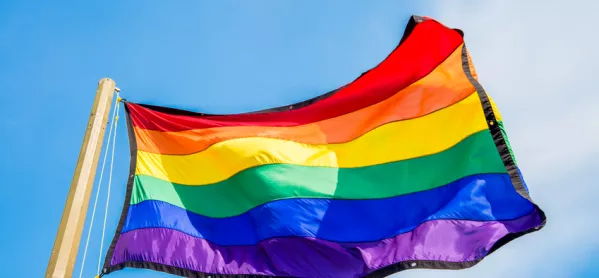- Home
- Safe spaces aren’t enough: how to create a school where LGBTQ students thrive
Safe spaces aren’t enough: how to create a school where LGBTQ students thrive

This piece first appeared on Usable Knowledge, from the Harvard Graduate School of Education.
As visibility and tolerance of LGBTQ (lesbian, gay, bisexual, transgender, queer, and questioning) people grows, it can be tempting for educators to assume that their LGBTQ students are contented and thriving.
That complacency would be a mistake, says Michael Sadowski in his new book Safe Is Not Enough. Just because a student has “come out” to her peers doesn’t mean she feels comfortable at school, or isn’t being harassed by classmates.
“Few educators or philosophers of education would argue that schools’ sole purpose is to keep children safe,” writes Sadowski, a faculty member in education at Bard University. But LGBTQ students, he argues, “are often served by their schools as if their mere safety were a sufficient objective in and of itself.”
In the past several decades, gay-straight alliances (GSAs), antibullying programs, and “safe space” stickers have become commonplace practices to protect LGBTQ youth from harmful harassment. These measures have helped prevent drastic consequences such as dropping out, substance abuse, and suicide - but now, it’s time to go further.
To truly support LGBTQ students, schools must radically rethink how to provide an educational experience that is not only safe but that overtly advocates for acceptance - an ideal environment for students’ social-emotional development and academic success.
Characteristics of an accepting school
Sadowski, along with Harvard Graduate School of Education doctoral candidate Tina Owen-Moore, paint a picture of what an ideal school experience for LGBTQ would look like. Sadowski observed these traits at schools around the country while researching his book, and Owen-Moore has implemented many of them at The Alliance School, a Milwaukee charter she founded with the explicit mission of providing an LGBTQ-friendly environment.
- The entire school building should be a designated “safe space.”Rather than have teachers elect to place “safe space” stickers outside individual classroom doors, schools can hang stickers, rainbow flags, and tolerance messages throughout the building. These symbols signal to students that they are accepted everywhere, by everyone, and not just in certain classrooms.
- Curriculum can incorporate LGBTQ themes. All students should read works by LGBTQ authors and learn about LGBTQ history, and school libraries should stock books that include LGBTQ themes. Talking about these ideas in class can help students feel validated and help their peers grow more comfortable with all forms of sexual orientation.
- The school should be a “silence-free” zone. LGBTQ students should feel comfortable talking and asking questions about sexuality and relationships with all teachers and staff. They should also feel comfortable voicing concerns related to school policy.
- Schools can commemorate LGBTQ celebrations and milestones.Teachers can encourage students to mark the National Day of Silence and celebrate National Coming Out Day. The school can also promote conversations about current LGBTQ-related news.
- LGBTQ programming should be inclusive of all students. These initiatives need to be targeted at everyone - not, as often happens, at only suburban, white, upper-middle-class students. Conversations and readings should also take into account the complex challenges students may face by living in an urban or rural area, being Latino, black, or Asian, or being transgender.
- Ending bullying should still be a priority, and the school must emphasize antibullying measures. Make sure all students understand what bullying is and how to report it. Teachers should also prioritize building connections between students.
- The community can use restorative justice practices. The Alliance School settles conflicts by training students to mediate discussions between peers and decide how they will repair harm they’ve caused. This method demonstrates to students how their actions and words have consequences, and it teaches empathy.
- School leadership needs to be part of the dialogue. Ideally, says Sadowski, school leaders “would know when to lead and when to follow - willing to learn from LGBTQ students and teachers but also willing to defend their rights to parents or other community members who might oppose LGBTQ-friendly programming.”
- Schools need to model LGBTQ support and encourage policymakers at higher levels to take note. To truly protect LGBTQ students, local, state, and federal policies need to fight discrimination on the basis of sexual orientation, gender, and gender identity.
Want to keep up with the latest education news and opinion? Follow TES USA on Twitter and like TES USA on Facebook.
Keep reading for just £1 per month
You've reached your limit of free articles this month. Subscribe for £1 per month for three months and get:
- Unlimited access to all Tes magazine content
- Exclusive subscriber-only stories
- Award-winning email newsletters



